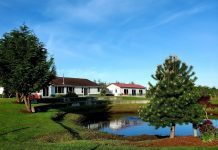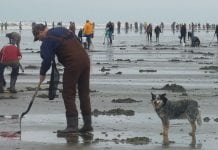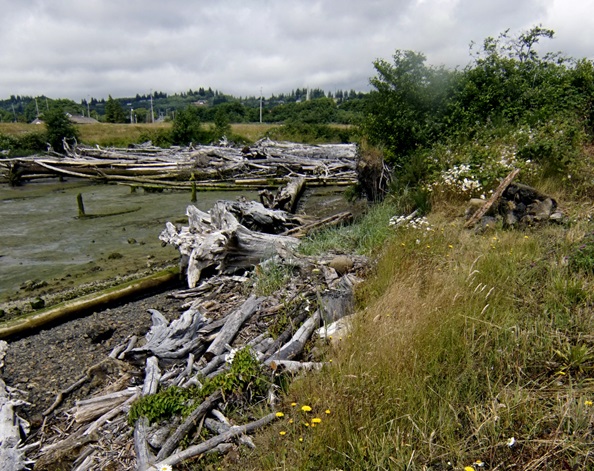As we go about our busy days in Grays Harbor, most of us neglect to notice the gentle river flowing silently beside the industrious streets of Hoquiam. The Hoquiam River’s history is rich and full of natural resources that helped shape Grays Harbor into what it is today. It’s an interesting story to tell.
 The Hoquiam River rises in Grays Harbor County and flows south to Hoquiam, where it empties into Grays Harbor, an estuary of the Pacific Ocean. The Hoquiam River has three main tributaries, the West Fork, East Fork and Middle Fork, as well as the Little Hoquiam. The Hoquiam River’s name comes from a Native American word meaning “hungry for wood” describing the mountains of driftwood that accumulate at the river’s mouth. “Hoquiam” itself was the name of a local Indian tribe. Indigenous peoples lived for hundreds of years along the river in advance of white settlement. The mild climate and abundant natural resources made possible the rise of a complex Native American culture. The indigenous people were able to obtain a good living without much effort. They had time and energy to devote to the development of fine arts and crafts and to religious and social ceremonies. Though the Hoquiam tribe is no more, these tribal traditions are alive and well today.
The Hoquiam River rises in Grays Harbor County and flows south to Hoquiam, where it empties into Grays Harbor, an estuary of the Pacific Ocean. The Hoquiam River has three main tributaries, the West Fork, East Fork and Middle Fork, as well as the Little Hoquiam. The Hoquiam River’s name comes from a Native American word meaning “hungry for wood” describing the mountains of driftwood that accumulate at the river’s mouth. “Hoquiam” itself was the name of a local Indian tribe. Indigenous peoples lived for hundreds of years along the river in advance of white settlement. The mild climate and abundant natural resources made possible the rise of a complex Native American culture. The indigenous people were able to obtain a good living without much effort. They had time and energy to devote to the development of fine arts and crafts and to religious and social ceremonies. Though the Hoquiam tribe is no more, these tribal traditions are alive and well today.
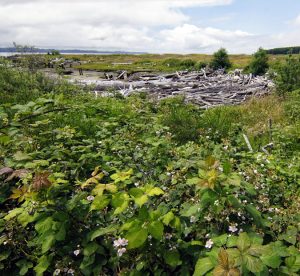
European settlers came bringing diseases with them that the Indians had no ability to fight, decimating the native populations. The first white man to settle in what is now Hoquiam was James Karr, who came from Oregon in 1859. He was joined by Ed Campbell (1835-1919), who in 1867, applied for and received a post office at the mouth of the Hoquiam River. A trading connection between Grays Harbor and the Columbia River settlements was established in 1879, when the schooner Kate and Ann began to offer service between the two points.
Logging operations began on the lower Chehalis in 1881 and the construction of a lumber mill along the Hoquiam River in 1885. Captain Asa M. Simpson, a mariner and businessman from San Francisco, provided the financial backing for the Northwestern Mill. The mill was later renamed the Simpson Lumber Company and retained that name until 1906. In 1927, a pulp mill was established under the name of Grays Harbor Pulp Company and a year later Hammermill Paper bought stock in the company and built a paper mill that later became the Grays Harbor Pulp & Paper Company.
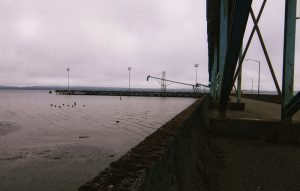
During the first 64 years of sawmilling in the region, approximately 31 billion board feet of lumber was cut on the harbor. The industry was booming. Then everything went bust. Overproduction, competition from other building materials, and decline in the demand for lumber all pushed the industry towards depression. Federal environmental legislation during the 1980s and 1990s further slowed logging on the Olympic Peninsula considerably. The crisis came to a head in 1990-1991 as the northern spotted owl was placed on the threatened species list, which led to the subsequent suspension of all logging on old-growth timber lands. Today the lumber industry has all but disappeared and the only two operating mills left have turned their backs to the river, as have most of the ship yards and canneries that once lined its banks. The Little Hoquiam Shipyard along the river still produces commercial and charter fishing boats and motor yachts.
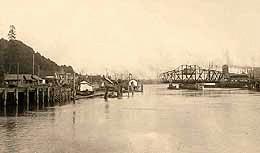
The City of Hoquiam owns 7,500 acres of the watershed, including reservoirs on Davis Creek and the West Fork Hoquiam River. Today, the Quinault Indian Tribe and non-tribal commercial fishermen run drift nets for salmon in Grays Harbor near the mouth of the Hoquiam River. Recreational fishermen can fish for salmon (chum, Coho and chinook), coastal cutthroat, and steelhead (from June-February). Herons, cranes, sandpipers, geese and ducks are just a few of the migratory birds that stop along the river
So, what will be the future for the Hoquiam River? The Department of Ecology has a Shoreline Restoration Plan in the works that would clean up wood waste, protect fragile areas and remove dams that hinder fish. In the meantime, enjoy the serenity and peace of a river walk and admire all the bird species that either migrate to or live on the river.















